We use techniques like Google's Custom Search API and advertools for efficient SERPs retrieval, and Python's NLTK and Pandas for data cleaning and text analysis. Crawling involves advanced scraping techniques and image recognition, bolstered by anti-scraping mechanisms. Data analysis employs Python libraries like Numpy, Spacy, and more for tokenization, lemmatization, and named entity recognition. Our aim is to extract, refine, and analyze data which can unearth patterns and correlations. All the data is visually interpreted and presented, providing profound insights into SEO. Stick around, there's more where this came from!
Key Takeaways
- Google Custom Search API is vital for retrieving Search Engine Results Pages (SERP) efficiently and accurately for SEO analysis.
- Advertools, in combination with Google API, can be used to scrape SERP data and store it in a pandas DataFrame for analysis.
- Python libraries like pandas and NLTK are essential for cleaning and analyzing the data retrieved from SERPs and crawled landing pages.
- Advanced web scraping techniques, including dynamic content handling and image recognition, aid in crawling and analyzing content from landing pages.
- Visualization of data using libraries like Matplotlib aids in understanding SEO performance and Google Algorithm (Al) analysis results.
Google Custom Search API Essentials
Diving into the essentials of Google's Custom Search API, we must first establish a connection, a process that necessitates a Google Developer Console account, a Custom Search API Key, and a Custom Search Engine ID. API key management is a crucial part of this process as it ensures secure and appropriate access to Google's API. Once connected, we utilize advanced search results retrieval techniques to extract valuable data. By leveraging Python's functionalities, we're able to schedule regular retrieval of Search Engine Results Pages (SERPs). This approach ensures a steady stream of up-to-date data for analysis. In essence, the integration of Google's Custom Search API is a vital initial step, paving the way for efficient SEO analysis and data-driven decision making.
Setting Up Advertools for Google API
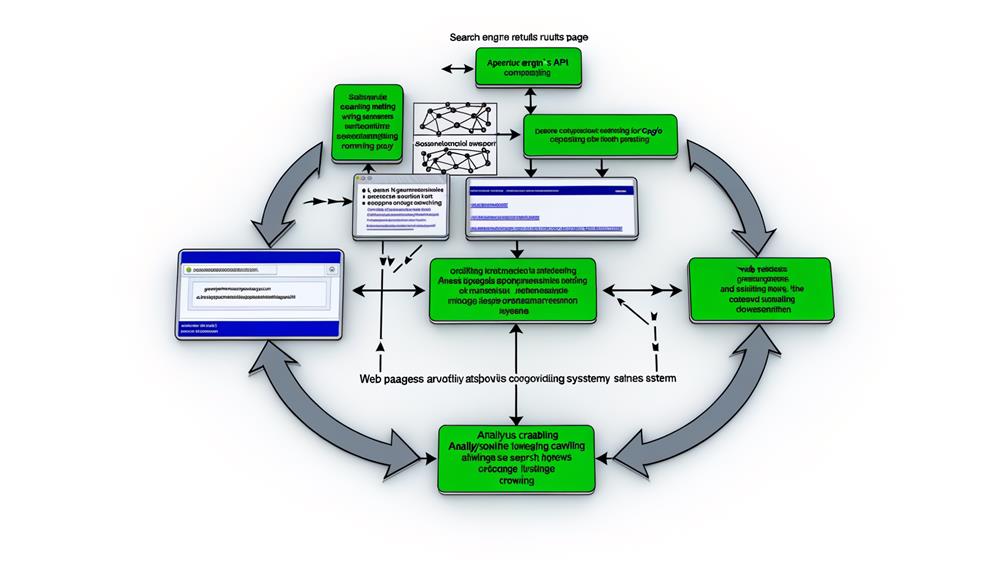
Seamlessly integrating Advertools into our Google API setup, we can significantly streamline the data retrieval process, allowing us to extract SERP data with just a few lines of carefully crafted Python code. This Python integration simplifies API key management, making it a breeze to keep track of and update our credentials when necessary.
Here's how to get started:
- Install the advertools package via pip install.
- Import advertools and set up your Google API credentials.
- Use the advertools.serp_goog() function to scrape SERP data.
- Store the data in a pandas DataFrame for easy analysis and visualization.
This process gives us a powerful tool for SERP analysis, making it easier to understand, visualize, and leverage Google's algorithms to our advantage.
Efficient Data Processing With Python

Harnessing the power of Python, we can transform raw data into valuable insights using a variety of efficient data processing techniques. Python's data cleaning and NLP text analysis capabilities are particularly beneficial for SEO efforts.
Here's an illustrative table:
| Step | Tool | Purpose |
|---|---|---|
| 1 | Pandas | Python data cleaning |
| 2 | NLTK | NLP text analysis |
| 3 | Matplotlib | Data Visualization |
We start with data cleaning, using pandas to handle missing or incorrect data. Then, we dive into NLP text analysis with NLTK, extracting useful features from unstructured text. Finally, we visualize our findings using Matplotlib, generating clear, compelling plots. By leveraging these tools, we're able to derive actionable insights from our data. This approach is not only efficient, but also highly effective.
Advanced Web Scraping Techniques
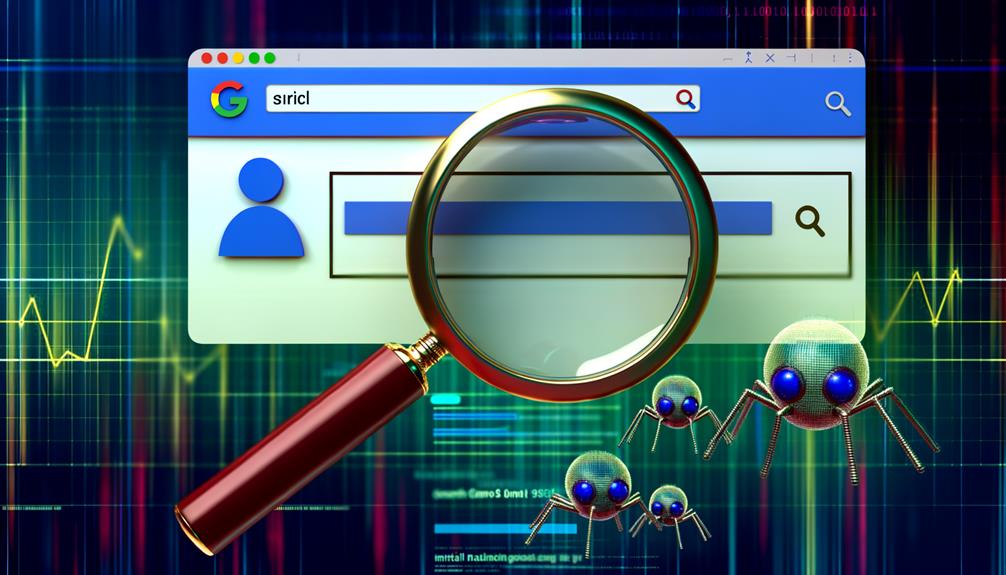
Building on our understanding of efficient data processing, let's now explore advanced web scraping techniques, which are invaluable for extracting, analyzing, and interpreting data hidden within the structure of websites.
- Deep Learning for Web Scraping: By leveraging deep learning models, we can improve the accuracy of our web scraping efforts. These models can identify complex patterns and structures in the website data, enabling more efficient extraction.
- Image Recognition for Data Extraction: Advanced web scraping isn't limited to text. With image recognition, we can extract and analyze visual data from websites, further enriching our analysis.
- Dynamic Content Handling: By using tools like Selenium, we can scrape data from websites with dynamic content, which traditional scraping tools might miss.
- Anti-Scraping Mechanism Overcoming: Techniques like IP rotation and user-agent spoofing can help us bypass anti-scraping measures implemented by websites, ensuring continuous data extraction.
Extraction Tools for Robust Data Analysis
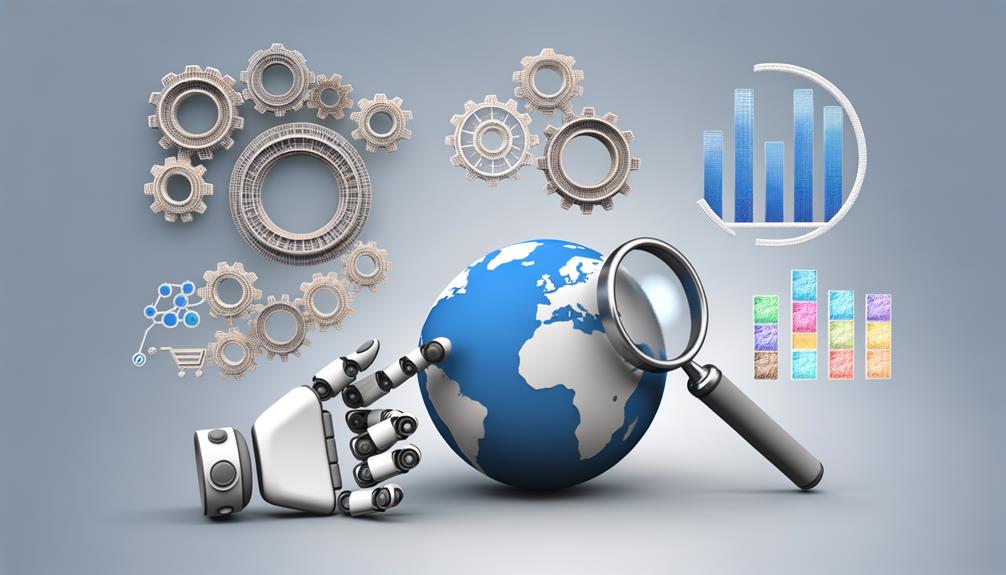
While we're delving into the intricacies of data extraction, it's crucial we explore the key tools that can bolster our analysis, enabling us to extract valuable insights from a sea of information. Python libraries like Numpy and Pandas are fundamental for efficient data cleaning techniques. They streamline the process, identifying and dealing with missing or inconsistent data. For textual data, libraries such as NLTK and Spacy offer robust natural language processing applications. They facilitate tasks like tokenization, lemmatization, and named entity recognition. Combined, these tools allow us to refine and analyze data effectively, unearthing patterns and correlations that might otherwise be overlooked. Utilizing these tools, we're able to elevate our data analysis, ensuring that our conclusions are based on clean, comprehensible data.
Visually Interpreting SEO Data
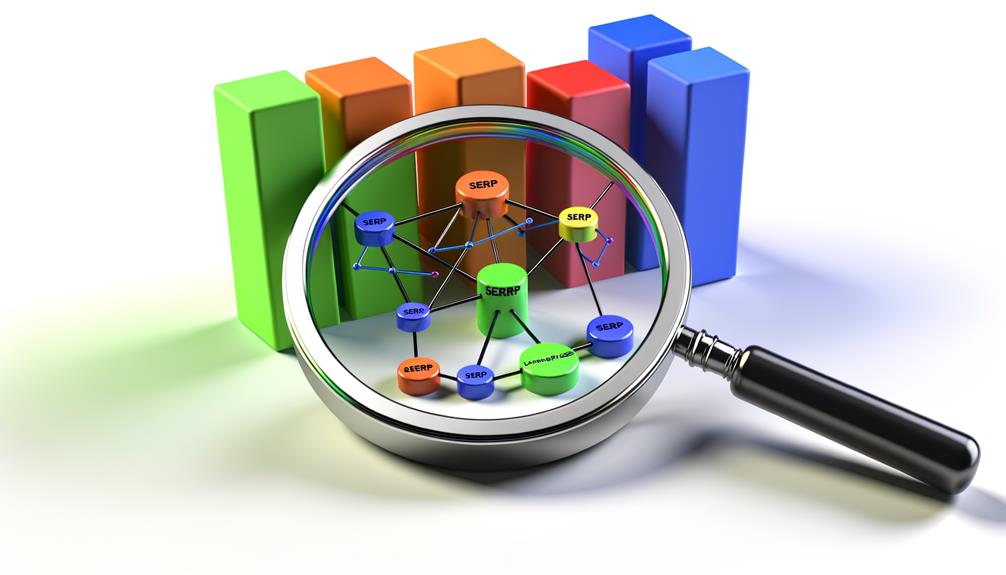
As we delve into the realm of data visualization, it's crucial to acknowledge that interpreting SEO data visually can revolutionize our understanding of complex patterns and trends, transforming raw data into actionable insights. SEO data visualization techniques are powerful tools that enhance our analysis and decision-making processes. These techniques aid in:
- Identifying patterns: Visualizing search intent trends can help us spot recurring patterns, enabling us to make informed SEO strategies.
- Spotting anomalies: Rapid changes in data can be easily identified and addressed.
- Understanding context: Visual data representation allows us to grasp the big picture, offering a comprehensive view of our SEO efforts.
- Communicating insights: Visualized data can be more easily understood, facilitating effective communication across the team.
Optimal Tools for SEO Data Visualization

To fully leverage the power of data visualization in SEO, we'll need to familiarize ourselves with some key tools that are nothing short of game-changers in this area. Plotly.graph_objects, Plotly.subplots, and Matplotlib.pyplot are essential for creating interactive visualizations, generating subplots, and plotting data. These data visualization techniques are efficient in interpreting SEO performance metrics, providing clear insights into how well our strategies are working. The URLParse tool changes the X-Axes format, making it easier to understand the data. Combining these tools with our SEO strategies not only optimizes our efforts but also provides a comprehensive view of our SEO performance. In the next subtopic, we'll delve deeper into how data science enhances our analysis of Google's algorithms.
Insights From SEO Analysis With Data Science
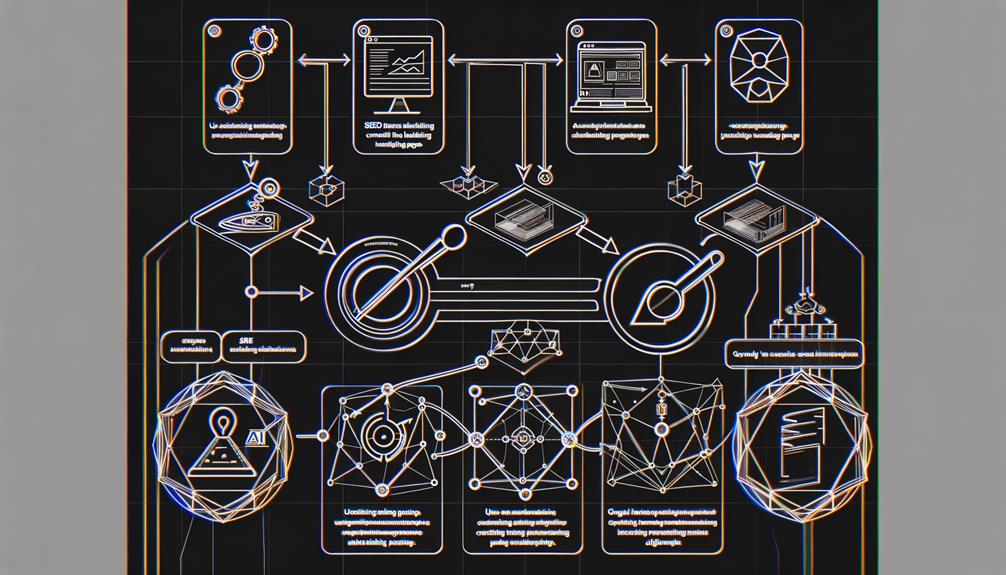
Delving into the realm of SEO through the lens of data science, we uncover rich insights that significantly enhance our understanding of Google's algorithms.
- Data Science Applications: We've seen how data science tools can extract, process, and visualize data, providing comprehensive insights into SEO trends.
- Semantic Search Intent: Understanding user intent is key to optimizing content. Data science helps us interpret complex patterns in search data.
- Entity Extraction: Harnessing natural language processing (NLP), we identify and analyze important entities within content, improving SEO strategy.
- Google Algorithm Analysis: With a data-driven approach, we decipher Google's algorithms, gaining insights into ranking factors and SEO optimization.
Thus, data science is an invaluable tool in SEO analysis, reshaping trends and strategies in this field.
Frequently Asked Questions
What Are the Costs Associated With Using the Google Custom Search Api?
We're often asked about the costs associated with using the Google Custom Search API. It's like buying a luxury car; you're paying for top-notch performance. The API pricing varies depending on usage. For the first 100 queries per day, it's free. Beyond that, it's $5 per 1000 queries, up to 10,000 queries per day. Remember, successful custom search implementation involves not only cost considerations but also efficient usage.
How Can I Ensure Data Privacy and Security When Using Advertools and Google Api?
We're mindful of data privacy and security using Advertools and Google API. We utilize encryption methods, ensuring data transmitted is unreadable to unauthorized individuals. We're strict with API security, only allowing access through secure authentication. We never store sensitive data longer than necessary and avoid public exposure of our API keys. By staying vigilant and innovative, we ensure data safety, integrity and confidentiality.
Are There Alternatives to Python for Efficient Data Processing in SEO Analysis?
In the vast ocean of data analysis, Python isn't the only ship sailing. R language is another efficient vessel, renowned for its statistical prowess and vivid visualizations. When comparing SEO tools, R's comprehensive packages give Python a run for its money. We've dived into both, analyzing each tool's strengths and weaknesses. Innovation is key in our exploration, as we constantly seek the most efficient and effective methods for SEO analysis.
Can I Use These Web Scraping Techniques on Any Website Without Legal Implications?
We can't scrape any website without considering legal boundaries and ethical considerations. It's crucial to check each site's robots.txt file to understand what's permitted. Moreover, excessive scraping can lead to IP bans. It's innovative to use web scraping for data collection, but always respect privacy and terms of use. Remember, just because we can scrape a website doesn't mean we should. Always prioritize ethics in data science.
How Can I Apply These SEO Data Visualization Tools to Other Areas of Digital Marketing?
We can apply these SEO data visualization tools to enhance visual analytics applications across various digital marketing channels. They'll provide multichannel marketing insights, helping us understand user behavior, campaign performance, and content effectiveness. By integrating these tools, we're not only improving SEO strategies but also innovating our overall digital marketing approach. It's all about leveraging data to make informed decisions and optimize results.



